- Home
- Thomas Keneally
Australians, Volume 3 Page 2
Australians, Volume 3 Read online
Page 2
Sectarianism rolled on, fuelled by Australia’s Orange Lodges on one side, and on the other by Catholic absolutism and the determination of the Knights of the Southern Cross, the Hibernians and other Irish organisations. These men not only wanted Irish validity to be recognised, but also wanted to demonstrate that their sense of Australianness was as good as anyone’s.
The divide remained. The sentiment, ‘He’s a Catholic but he’s a good bloke’, was echoed on the other side by ‘He’s a Protestant but . . .’ There were, even before World War I, places Catholics could not get jobs. Sanitarium Health Foods had an overt no-Catholics policy. But in other places it was a matter of unspoken practice. The situation was not helped by the fact that the Catholic clergy, who wanted their flock to be accepted into the community, nonetheless came down hard on Catholic–Protestant ‘mixed’ marriage, requiring the Protestant partner to abandon the Protestant tradition for the children of the marriage, and allowing the ceremony to be performed only behind the church altar.
The old furies had a considerable time to burn yet, and the clergy, generally, were not helping.
THE FEARFUL AFTER-SHADOW
In late March 1921, the Australian Imperial Force (AIF) ceased to exist and the responsibility for the treatment of the war’s mental patients was taken up by the Department of Repatriation. This department, not always generous in its attitudes to former Diggers, was to deal with the after-shadow of the war, the plaints of soldiers’ women, the symptoms of the men. Government help was needed because civilian friends were not always understanding of the shell-shocked or men suffering from war neurosis. Civilians could not understand why soldiers did not want to forget the trenches and dedicate themselves utterly either to the urgent politics of the day or to the atmosphere of prosperity and hedonism of the early 1920s.
But psychiatric symptoms had not vanished with the onset of peace. At the time of the outbreak of the war there were in Australia no specialist clinics or psychoanalytic institutes such as existed in Britain and on the continent. It was common at the start of the conflict for physicians to respond to symptoms of the shock of war by blaming the patient for moral inferiority in the face of modern battle. Even when war ended, some physicians on the home front still held the same views. Yet, as historian C.E.W. Bean said of young men coming out of the lines of Pozières, ‘They were like men recovering from a long illness.’ They were not what people called ‘mad’ but many confess in their journals how close they came to it. Some of those faces Bean saw might carry the disease latently, only to explode years later, a bomb at the kitchen table.
Returned soldiers’ groups and regimental associations exerted pressure to see that there would be no military stain attached to those Diggers who had become mental patients under the shock of battle. They did not want their former comrades either stuck with the labels of civic mental disease or certified and written off into the civilian mental health system.
Colonel Eric St Clair, a leading Australian psychiatrist, wrote to Major-General Richard Fetherstone, Senior Military Medical Officer in Australia, a man short in stature but decisive in action, a gynaecologist not a psychiatrist, but a doctor who had seen the mayhem of both Gallipoli and the Western Front. Fetherstone declared that former soldiers sent to military hospitals appropriate for shell-shock treatments should be admitted ‘by the usual transfer without certificate of any kind’. The certificate was a record that might be used against a mental patient in later life.
At least the mental health problems of Australian ex-servicemen were not treated with the same contempt as they were in the United Kingdom. A post-war medical assembly held in Brisbane in 1920 and involving many psychological specialists, led by the remarkable, wiry Melburnian Dr Springthorpe, made sure of that. Springthorpe was, by this time, in his early vigorous sixties, a husky little physician who had had a fashionable practice in Collins Street. When he returned home in 1919 from his service in France, Belgium and the United Kingdom it was to continue his work with the shell-shocked, and he resumed his post of visitor to metropolitan asylums as well as recommencing private practice. (One of the panel’s secondary aims was to get psychiatric instruction incorporated in the undergraduate medical curriculum. Thus psychiatry became a profession in Australia.) Dr Springthorpe complained that many medical boards appointed to look into the claims of returned soldiers for help had had no experience of the Front, and had refused to grant some of the shell-shocked and disabled a pension, under suspicion that they were malingering. Springthorpe, by contrast, remained a potent voice for men whose wounds were not always visible.
A War Pension Act had been passed as early as 21 December 1919, and by 1924 there were nearly eighty thousand war pensioners in Australia, but only 4 per cent were ‘mental cases’. In 1926, Smith’s Weekly, a populist magazine founded by Sir James Joynton Smith in 1919, and considered to be the voice of the Digger, claimed that eight thousand veterans were dying each year, at an average age of forty-five, some as a result of mental illness. It nicknamed the Repatriation Commission the ‘Cyanide Gang’, since its rulings were strict, and rejection of disability claims led some former Diggers to suicide. The Australian Worker contrasted the praise for the Digger by public officials at their departure for war with the niggardly treatment afterwards.
An example of ‘disability shell shock’ was Private H, who had served in France in 1917 and 1918, been wounded twice and burned by gas. He kept asking ‘foolish questions’ and had shown some violence. His father said his son had been ‘queer’ since his return from the war. Another characteristic case was that of B.H. Wright, a law student who turned suddenly violent in late 1919 and received twelve months’ imprisonment with hard labour in Grafton Gaol in New South Wales. He had been wounded in 1917, took four months to recuperate, returned to the Front, been blown up and buried alive, and, in March 1918, gassed. On his return to Australia in April 1919 he complained of loss of memory and started drinking. His family used the same phrase so many others did—he was ‘not the same man’.
The mental state of returned soldiers was a crisis for their wives and families. In one case, a soldier, Charlie Clifton, broke a bottle over his wife’s head. She then killed him by slitting his throat with a razor. She gave evidence of persistent attacks upon her, and her situation and that of her victim were so well understood by the court that she was found guilty of manslaughter, not murder. There were many reports of impotence and marriage breakdown, and also of crises arising from war experience but surfacing years after the war ended. ‘James’ was a thirty-five-year-old former soldier who was admitted to Broughton Hall psychiatric clinic in Sydney as late as April 1930 suffering from delusional melancholia. He had been beside an explosive blast in France in 1918 and was now obsessed with the memory and ‘depressed, burst into tears easily’. ‘Joseph’, a wagon builder admitted to Broughton Hall in December 1925, had been working on a vehicle in France when a bomb from a German plane fell near him. His immediate response at the time was to become very frightened and to run about crying. Yet he survived the war without being treated. Seven years after, he still could not sleep properly, and when he did sleep, he always woke startled. ‘Dennis’ was thirty-two and had been earning a living as a plasterer when admitted to Broughton Hall for seven months in 1927. He had been complaining of headaches for the previous eight years and his mother wrote, ‘I can only say that my son has complained of his head ever since he returned from France . . . he was under arms from 11 August 1914 . . . since his return he has been irritable and argumentative.’ Dennis had seen four doctors and three specialists and been to a sanatorium three times but without improvement.
‘Fred’ was a former officer who had been wounded and concussed in a raid in France in 1916. He was unable to sleep, he had fits of rage, pains throughout his body, regular lapses of memory and terrifying nightmares, and by 1923 was so depressed he could not work. A gunner, ‘Jack’, a former deep-sea diver, was admitted to Broughton Hall at the end of the war after being wou
nded at Passchendaele by fifty pieces of shell, with two wounds to the back of his head and the loss of both eyes, one of them knocked out by the explosion. By 1922, though blind, his rages were difficult to control. ‘H’ of the 7th Field Engineers, a thirty-two-year-old carpenter repatriated to Australia in March 1917, was the sole survivor of a group of ten men blown up during an artillery barrage. At Broughton Hall he told his doctor, Major Campbell, that he had no memory of France except when he dreamed. They were, reported his doctor, ‘very distressing dreams’.
As with some of the cases above, not all soldiers manifested their psychic damage immediately. In June 1920, a young returned officer named Eli Bugby hanged himself from the rafters of his home in the wealthy Sydney suburb of Double Bay. Bugby’s wife told the coroner that her husband was ‘gassed and sustained shell shock at the war and had been distressed because his employers would not reinstate him’. He was on a partial pension of two pounds, seventeen shillings and sixpence a week, barely more than half the average wage. Mrs Bugby was now left to raise their child without any pension at all, since the Repatriation Commission decided that her husband’s suicide was not related to his war service.
As late as August 1929, Mrs Elizabeth Moffatt wrote to Victoria’s Inspector-General of the Insane about placing her father, Peter Henty, a veteran of both the Boer War and World War I, in a mental hospital. In battle he had suffered head and side wounds. Throughout the 1920s, his mental health declined, and his daughter was certain his alcoholism was due to the impact not only of the physical wounds of battle but also of the mental ones. He was admitted to the Royal Park Mental Hospital in a depressed and lost state and the doctors declared it very difficult to get ‘anything intelligible’ out of him. Again, like other relatives of soldiers, though Moffatt had written in desperation to the Inspector-General, she did not want her father in a civil insane asylum, but instead in the Mont Park Military Block in Melbourne, which dealt with former soldiers displaying similar symptoms.
Fred Jacoby, an entrepreneur in Perth after whom a famous city park is named, was a notable advocate for his soldier son, Fred junior, who lived through the 1920s in the military ward of Perth’s Claremont Hospital for the Insane. Jacoby was the leader of the Mental Soldiers’ Parents of Western Australia. He campaigned against the mixing of military patients with civilian asylum patients and advocated having a parent of a shell-shocked young man on the Board of Visitors, the body that assessed psychiatric hospitals. He was not intimidated by the public distaste for, and prejudices against, mental trauma.
In these and sundry other ways then, the Western and Eastern fronts resonated in the suburban kitchens and living rooms of Australia, and the Repatriation Board made the 1920s bitter for many heroes. The Returned Sailors and Soldiers Imperial League of Australia (RSL) founded a Centre for Soldiers’ Wives and Mothers in Sydney in 1921, the only one in the country, supervised by a single doctor, a formidable organiser and chain smoker, Katie Ardill Brice, daughter of an energetic Baptist social reformer. After graduating in medicine from Sydney University in 1913, she had been a one-woman volunteer medical corps in military hospitals in the Middle East, France and England during the war. As well, the Red Cross created in 1919 a holiday centre at Narrabeen, in northern Sydney, as a means of relieving the extreme stress on families.
As the children squealed in the Narrabeen surf, medical boards decided their families’ futures. One of the saddest cases was that of Gordon Floyd, a father of a family, who had been initially reluctant to enlist because he had had rheumatic fever as a child, and its effects were lingering. He had finally enlisted, however, after being presented with a white feather, an accusation of cowardice often handed out by young women in the streets and even in the dance halls of Australian towns and cities, or else sent through the post. In 1919 he received a small disability pension for damage to his leg, his arthritis and heart problems. But he was denied a fuller pension because of a letter his brother had written to the Department of Defence during the war in an attempt to prevent Floyd’s acceptance by the recruiting board. A letter written out of love was now used to prove that he had pre-existing health problems. Floyd’s family was never able to regain the level of prosperity they had known before the war.
Under the Soldier Settler Schemes, run with the best of intentions by the various states—South Australia passing its legislation as early as 1915—about forty thousand returned men throughout Australia were given soldier settler blocks. The project was meant as a blessing and an act of beneficence since, despite the ambiguous results of land reform laws in the nineteenth century, most Australians still attached a redemptive glow to the idea of the independent small farmer. As well as providing income, the land would offer the soldier a bracing therapy for the events he had been through and any wounds he bore, and was therefore welcomed as an appropriate reward by the soldiers themselves.
In Victoria, according to the files of the Closer Settlement Board, which ran the scheme in that state, 40 per cent of all soldier settlers were disabled in some way, and this figure should have given the authorities pause. By 1922, John Watson, who farmed 55 acres (22 hectares) at Dandenong under the Victorian scheme, was admitted to repatriation hospitals in Melbourne and Bendigo suffering after-effects of battle wounds. His wife Mary had now to support eight children aged between five and eighteen years, and reported that she could not carry on the farm on her own, but leaving it would mean that she would be saddled with the farm debt of £550. Mrs Watson was relieved of her debt but had to walk off the farm with her eight children, broke, and bewildered as to where to go.
The wives of soldier settlers, especially those soldiers on marginal land or those who were partly disabled in war, often had to become the true farmers when their menfolk were stricken, and they often laboured with a clear sense of the ultimate futility of their struggle. In 1927, a Mrs McMahon suffered a nervous breakdown after struggling to maintain her sick husband’s block in Korumburra in Victoria. Because of her collapse and his incapacity to work, the lease was cancelled and the couple moved back to Melbourne.
Even apart from the suspicions of the Repatriation Board, men of that war generation had a spiky pride and found it difficult to take help from charities such as the Red Cross. In the trenches and rest areas, the Red Cross parcels had been welcome, but post-war charity was different. When in 1926 George Goodwin applied to the Tubercular Soldiers’ Aid Society asking for help, he wrote, ‘God how the word “charity” stinks in my nostrils.’ Like Goodwin, many soldiers had been invalided home with tuberculosis. In 1915, Patrick Rouan was diagnosed with pulmonary tuberculosis while fighting in Gallipoli. He was nursed in England, where he married an English girl named Dora, and was invalided home in 1917, Dora and their child following him on. In 1920, Patrick’s boot-repair business failed because of his ill-health, but he was fortunately granted a full pension. By 1923, his four young children had all been infected with the disease. Patrick took to sleeping in a tent outside the home to give himself maximum exposure to fresh air and to try to quarantine himself. Pitching a tent in the backyard was a frequent option for tubercular soldiers who believed that fresh air would help them. The tent was particularly favoured by men whose houses lacked back verandas.
Mrs Iris Mead, whose husband had been put into a sanatorium for tuberculosis, spoke for an entire class of impoverished Diggers’ families in writing to the Tubercular Soldiers’ Aid Society: ‘We are not having proper food—I have dispensed with the weekend joint for weeks now trying in all ways to lessen expenses—but it is all too big an undertaking . . . the children are needing warmer clothes.’
KISS ME, YOU FOOL
For girls unburdened by the care of a damaged husband, the 1920s flickered with the promise of a new freedom. Until the Great War, schoolboys had frequently been expelled for walking on the same side of the street with a girl on the way to or from school. A training guide, Australian Etiquette: All the Rules and Usages of the Best Societies in the Australasian Colonies o
f 1888, was still read in the early twentieth century and told young women that they should not be ‘demonstrative of affection’ even after a proposal of marriage: ‘Over-demonstrations of love are not pleasant to be remembered by a young lady, if the man to whom they are given by any chance fails to become her husband.’ For girls in 1914, late adolescence was supposed to be a period of meek near-invisibility.
Such strictures came under challenge in the early 1900s, but particularly after the war, and there arose in Australia as elsewhere a new anxiety about young white women’s moral fitness to be the mothers of the future. Polite people were alarmed by the increasingly less formal and more ‘forward’ behaviour even of girls from good families. The anxiety was also created by the greater number of working-class girls taking jobs in factories, and the way these industrial girls spent their free time, often in the company of larrikins, irreverent loutish young men, runners for bookmakers, thugs, or unwilling labourers. The term ‘larrikin’ possessed then none of the approving colouration it would take on gradually, in part due to C.J. Dennis’s 1916 verses—supposedly the utterances of an engaging Melbourne larrikin named Ginger Mick.

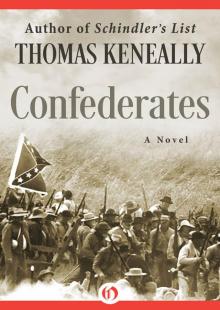 Confederates
Confederates Flying Hero Class
Flying Hero Class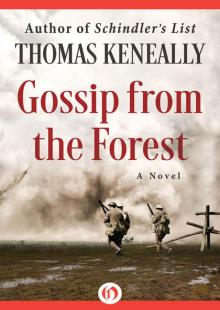 Gossip From the Forest
Gossip From the Forest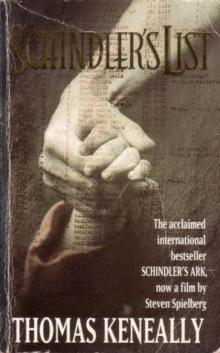 Schindler's List
Schindler's List Bring Larks and Heroes
Bring Larks and Heroes Australians: Flappers to Vietnam
Australians: Flappers to Vietnam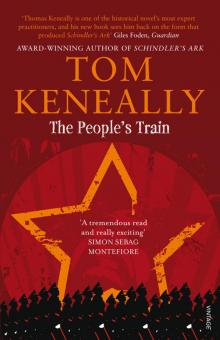 The People's Train
The People's Train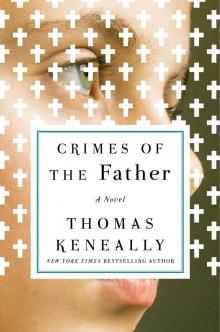 Crimes of the Father
Crimes of the Father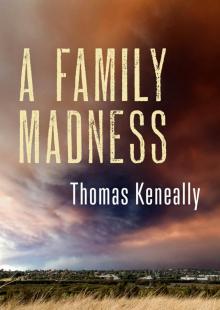 A Family Madness
A Family Madness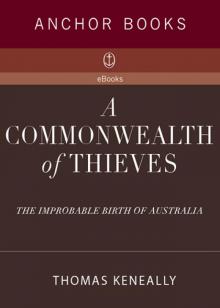 A Commonwealth of Thieves
A Commonwealth of Thieves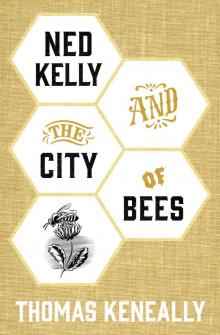 Ned Kelly and the City of Bees
Ned Kelly and the City of Bees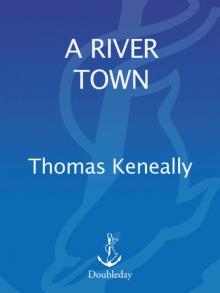 A River Town
A River Town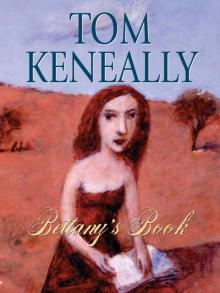 Bettany's Book
Bettany's Book Blood Red, Sister Rose: A Novel of the Maid of Orleans
Blood Red, Sister Rose: A Novel of the Maid of Orleans Victim of the Aurora
Victim of the Aurora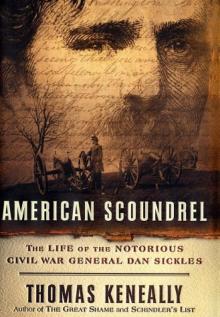 American Scoundrel American Scoundrel American Scoundrel
American Scoundrel American Scoundrel American Scoundrel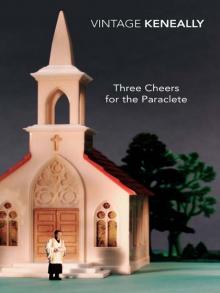 Three Cheers for the Paraclete
Three Cheers for the Paraclete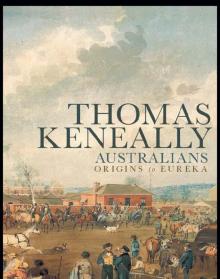 Australians: Origins to Eureka: 1
Australians: Origins to Eureka: 1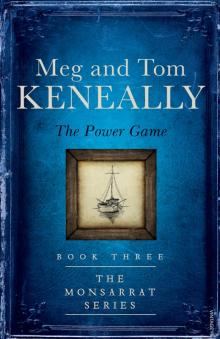 The Power Game
The Power Game The Chant Of Jimmie Blacksmith
The Chant Of Jimmie Blacksmith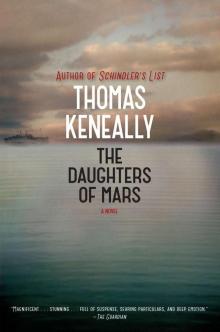 The Daughters of Mars
The Daughters of Mars Searching for Schindler
Searching for Schindler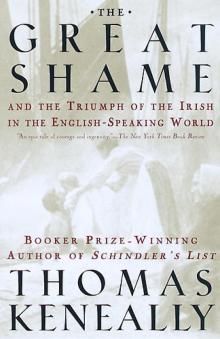 The Great Shame: And the Triumph of the Irish in the English-Speaking World
The Great Shame: And the Triumph of the Irish in the English-Speaking World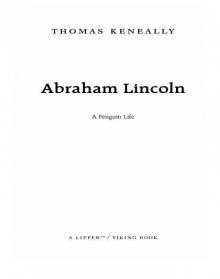 Abraham Lincoln
Abraham Lincoln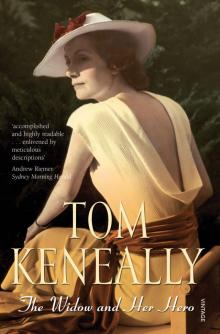 The Widow and Her Hero
The Widow and Her Hero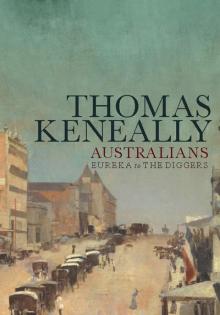 Eureka to the Diggers
Eureka to the Diggers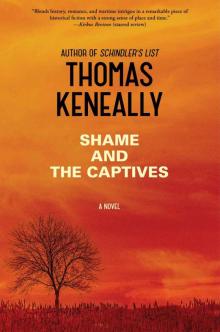 Shame and the Captives
Shame and the Captives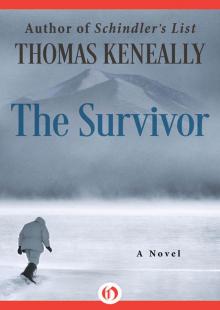 The Survivor
The Survivor Jacko: The Great Intruder
Jacko: The Great Intruder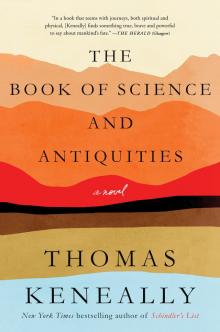 The Book of Science and Antiquities
The Book of Science and Antiquities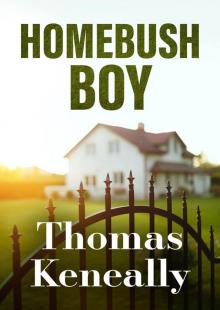 Homebush Boy
Homebush Boy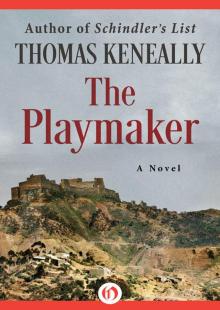 The Playmaker
The Playmaker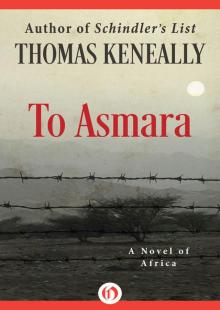 To Asmara: A Novel of Africa
To Asmara: A Novel of Africa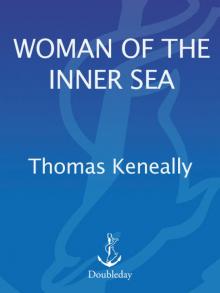 A Woman of the Inner Sea
A Woman of the Inner Sea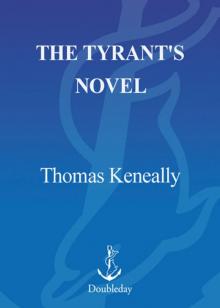 The Tyrant's Novel
The Tyrant's Novel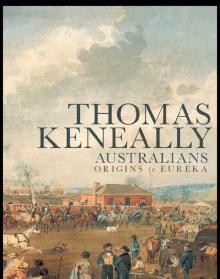 Australians
Australians Schindler's Ark
Schindler's Ark The Soldier's Curse
The Soldier's Curse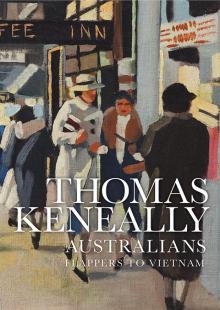 Australians, Volume 3
Australians, Volume 3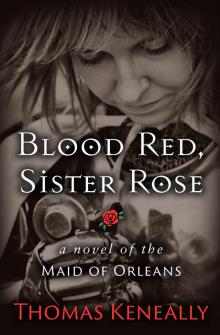 Blood Red, Sister Rose
Blood Red, Sister Rose A Victim of the Aurora
A Victim of the Aurora The Unmourned
The Unmourned Australians, Volume 2
Australians, Volume 2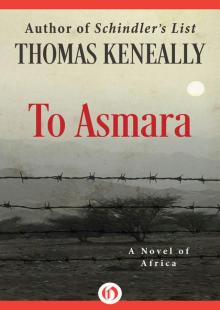 To Asmara
To Asmara